Listen to the 64 squares
A chess player's prime struggle during a game lies in the constant bid to grasp at and manipulate the two fundamental elements governing geometry and dynamics on the chessboard, namely space and time. Yet these two ideas are not typical just to chess: reality itself that we perceive all around us with our five senses is intimately woven into the fabric of space-time. In this eloquently written article, the author Srikanth Govindaseshan, makes some unlikely connections and delves into the mystical and scientific conceptions of space-time closely in relation to the game of chess. Here, dear readers, is a real opportunity to broaden the horizons of your mind.
...Space...Time...Space-time...
"You must ask each piece what it can usefully achieve on its own, what help it requires from the other pieces, and in what way it itself is prepared to help them." - David Bronstein
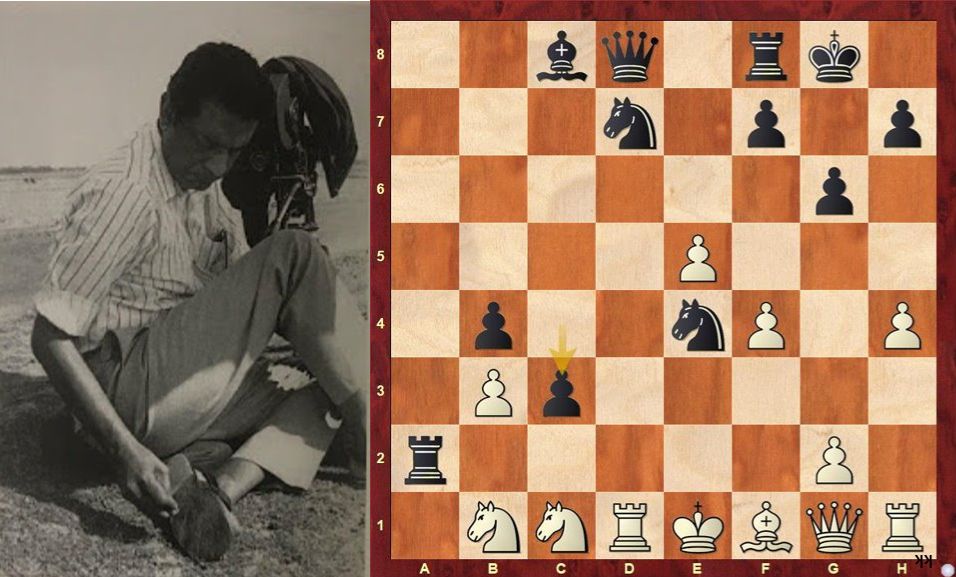
The great still photographer Nemai Ghosh, wrote, in his memories of Satyajit Ray, "I don't know what possessed me then. As if in a trance I felt my finger pressing the shutter on the camera ... and I finished both rolls of film". The shutter, choosing the time to urge the fingers press it, to compose a shot, is dictated by the needs of a situation, and not the desire of the one who clicks it! It corresponds to time and time corresponds to space - which is defined by two coordinates: a start and an end.
So, everything is defined and ruled by space: the cosmos, the earth, human relationships, even animals perceive space by marking their territory and exercising control over it. The game of chess too is defined and ruled by Space, the other two elements - Time and Material - are merely subservient to it. Everything that happens, happens on the sixty-four squares. The fingers pressing the shutter, or more aptly, the shutter urging the fingers to press the button in photography, is similar to listening to your pieces, the squares, while you play. Reshevsky - the chronic time pressure patient - played so unbelievably fast and precise in extreme time pressure that Mikhail Tal once remarked, "Reshevsky fingers knew where to put the pieces when he barely had time to press the clock, on every move!"
Nemai Ghosh's fingers uncannily pressed the shutter button while in the shoot for Pratidwandi when Manik Da (as Satyajit Ray was affectionately called) sitting in a vast expanse of an outdoor spot, with his camera beside barely covering him by a shade from the scorching heat of a summer afternoon, engrossed in the thoughts about the next shot, picked a twig to remove dirt from his slippers! He was not there alone, there was a whole crew, the actors, but they are all passively hidden from the shot and play no role in the picture. This aspect unwittingly allude to the position on the right! The white pieces are present physically on the board, but merely present and doing nothing! Rather they are working in tandem with the black pieces. And somehow I have managed to connect these two disparate things! Well, isn't creation only about making new connections?
The great Tamil poet Bharathiyar (பாரதியார்) once said the following:
"பாம்புப் பிடாரன் குழ லூதுகின்றான்
குழலிலே இசை பிறந்ததா? தொளையிலே பிறந்ததா?
பாம்புப் பிடாரன் மூச்சிலே பிறந்ததா?
பொருந்தாத பொருட்களைப் பொருத்தி வைத்து
அதிலே இசை யுண்டாக்குதல் - சக்தி"
In the above poetry, Bharathiyar describes a flautist playing his flute and wondering where from that beautiful music emerges. Is it from the flute and its holes? Or is it from the air that he is blowing through it? And then the conundrum is reconciled thus: the act of creation lies in bringing disparate things together and to create something new out of their ordinary presence where they are separate. It may be music, an allusion in poetry, or a new idea on the chessboard, where, by bringing differently capable pieces together and making them interact or influence squares one hints at something out of nothing. Most importantly, on chessboard, the two parties perceive things at varied degrees and most often than not, have divergent viewpoints.
Coming to the position on the right...
White pieces after all were developed, initially, they roamed around the board....with only the Queen managing to cross the "equator" once to gobble a pawn on d6 and subsequently paying the price by relegating all his pieces to the initial rank in a haphazard manner! Well, Anatoly Karpov is one of the greatest exponents of playing chess in the most simple and profound way! His pieces moved around the board with gay abandon, and there never was a deceit hidden In this game, he was on the receiving end!
This being so, the victor in the above position, Gary Kasparov one of the most fearsome players, whose pieces normally plundered space by brutally attacking the opponent's half of the board, was left gasping for breath in the following position:
Vassily Ivanchuk - Garry Kasparov, Linares 1991
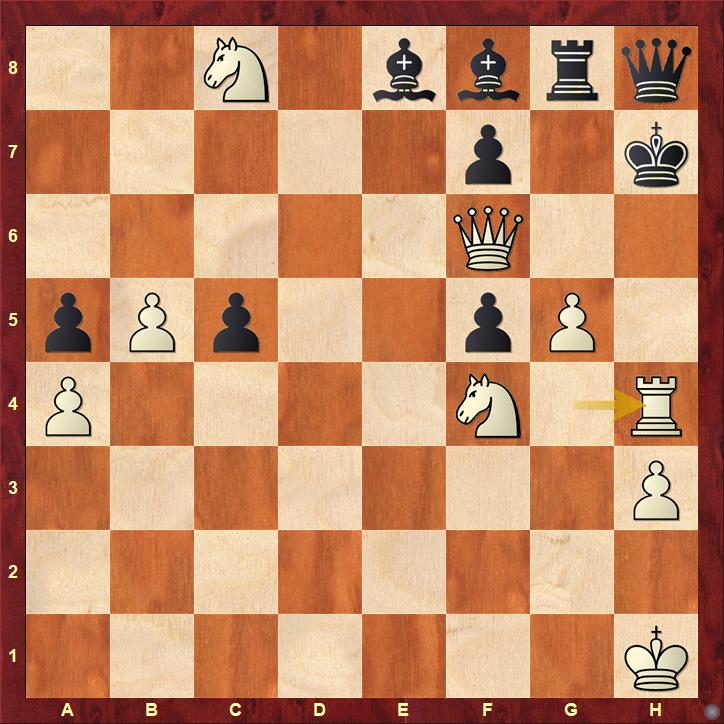
Space....Space....Space...
The world is all about space, chess is all about space - you concede space in an inconsequential area and control space where it matters, so that your pieces can manoeuvre freely and finally deliver checkmate! Space is the primordial element in nature! Every other element - Air, Fire, Water, Earth - the Pancha Bhootham - evolved only subsequently. The five senses that we have: sight, sound, touch, taste, and smell are attributed to one corresponding element in nature. Accordingly, space is associated with sound and therefore the sense of hearing is attributed to space. Unfortunately, humans have lost the ability to hear, see, feel a major portion of what the nature has to offer us, by constant conditioning and exposure to artificial means. We have drifted far away from the nature, and are now suffering the consequences.
We are more concerned about the element space and its associated sense hearing or more precisely "listening". Space on a chessboard corresponds to squares and therefore the title "Listen to the 64 squares". (The title has to be justified somehow!!)
Position 1
Let us observe what happened in the Karpov vs Kasparov game subsequent to 13.Qd6
Karpov - Kasparov, Linares 1993
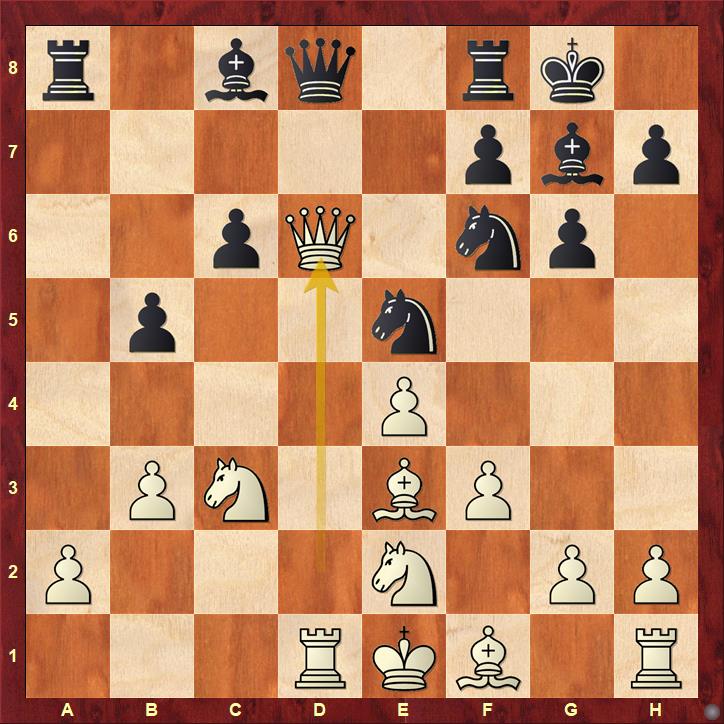
Obviously, the compensation for the sacrificed pawn lies in the undeveloped state of White's kingside, the stranded king in the center. Give this position as White to an engine, it will ruthlessly exploit the advantage of one pawn that it has gained by finding awkward moves to defend the king. Human masters generally are not capable of awkward and unprincipled moves....though now they are trying to "bridge" this gap by aping the Alpha or Leela.
13...Nfd7
Obviously! After giving up a pawn for initiative, Black has to find ways to conceive an attack: breach White's fortress and try to get at the white King. The move played prevents Queen exchange, while opening up the diagonal a1-h8 for the Bishop to have a say.
14.f4?!
It is very intriguing to note that even such great masters as Karpov are susceptible to such diffusion in the thought process! The following position occurred in a game between Chigorin and Rubinstein in Lodz, 1906
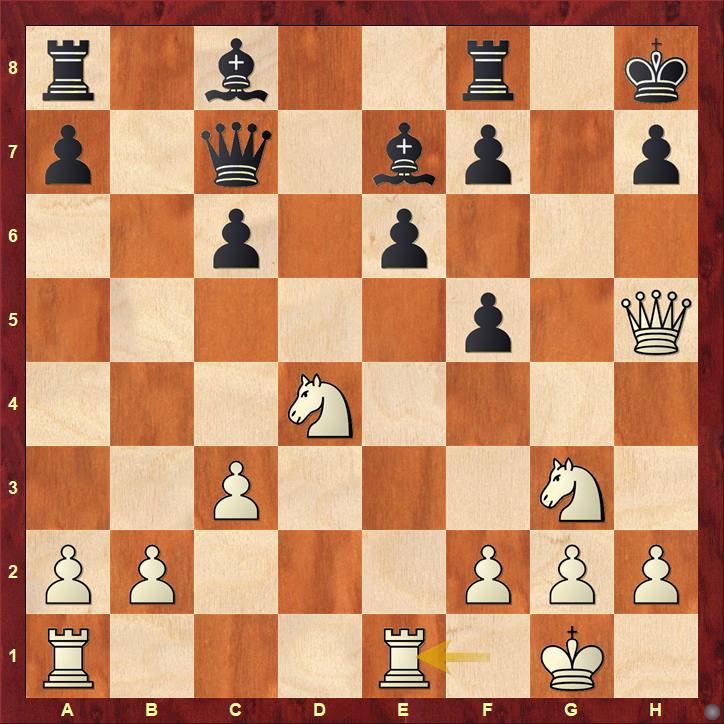
Surprisingly, the great Rubinstein played a very anti-positional 15.....f4? here allowing White Knight to go to e4 and from there to g5 and wrecked Black's position. Probably 15.....Bf6 or 15.....Rb8 followed by ...Bf6 would have given Black a playable position though White might still be enjoying a considerably advantage due to the poor pawn structure of Black.
In a similar way, Karpov's 14.f4? allowed Black Knight to go to g4 pushing White's pieces back and conceding the initiative. Neither the above aspect of giving squares to opponent pieces, nor the retort by Black in response to 14.f4 is difficult to perceive for anybody going through the game subsequently. Yet, there is something happening in the thought process during the game as to confuse or inappropriately consider the element of space and the trade off of space - the squares.
Soltis, in his excellent book The Wisest thing ever said about Chess, quoted Max Notkin who said, "If our eyes had the capability of taking in various sectors probably we'd play stronger chess". Seeing all the 64 squares at the same time is a perennial issue for Chess players. As in life, we are blind to many things.....and at times assume or take things for granted. Space in chess corresponds to squares, or more precisely the geometrical lines comprising of squares.
14...b4!
The Knight can stay that much longer in that important central square, which it is occupying now, to make some impact before it can move and attack other weakness exposed by the move 14.f4. If a piece is attacked, it is not necessary that it should move. But there is a tendency for human mind to get conditioned and react as well as assume reactions in most circumstances, despite knowledge, despite experience. Now, if White plays 15.Na4 then 15...Ra4! 16.ba4 (16.fe5 Be5!) Nc4! 17.Qd3 Nb2 gives a clear advantage. And 15.fe5 bc3 16.Nc3 Be5! gives a strong initiative for Black as the white King will now be permanently stranded in the center.
15.Nb1 Ng4! 16.Bd4
A natural response, when one side is defending, is to trade off pieces.
16......Bd4 17.Qd4 Ra2 18.h3 c5 19.Qg1 Ngf6 20.e5 Ne4 21. h4 c4 22.Nc1 and White's position is in ruins
This completes the picture which was given in the beginning!
Position 2
Sultan Khan - Jose Capablanca, Hastings 1930
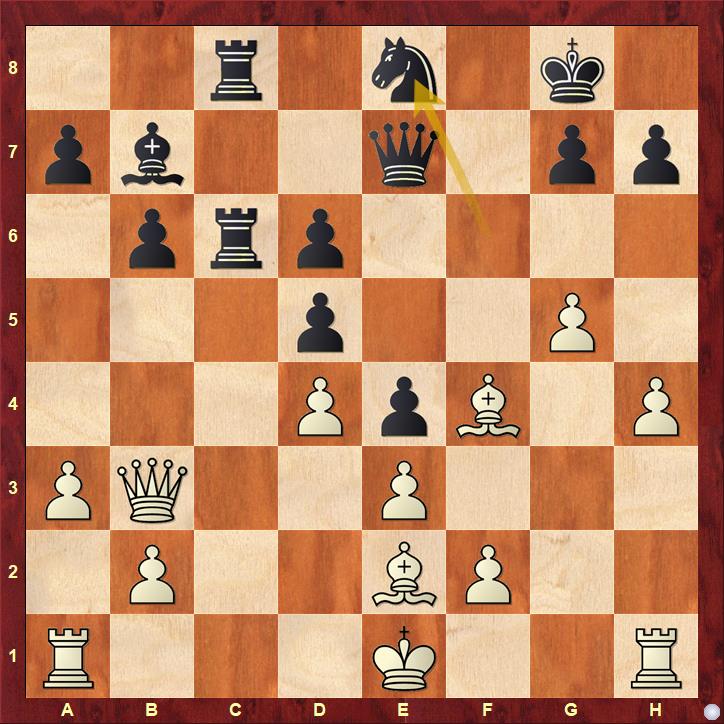
The great Cuban, playing Black, had unusually ruined his pawn structure and managed to put his knight and the bishop clumsily. Very rarely he had to suffer such positions as he lost only 36 games in his entire life span! The rooks commanding the only open file is only an optical illusion.
21.Bg4! Rc1 22.Kd2 R8c2 23.Qc2! Rc2 24,Kc2 Qc7 25.Kd2 Qc4 26.Be2! Qb3 27.Rab1 Kf7 28.Rhc1 Ke7 29.Rc3 Qa4 30.b4 Qd7 31.Rbc1!
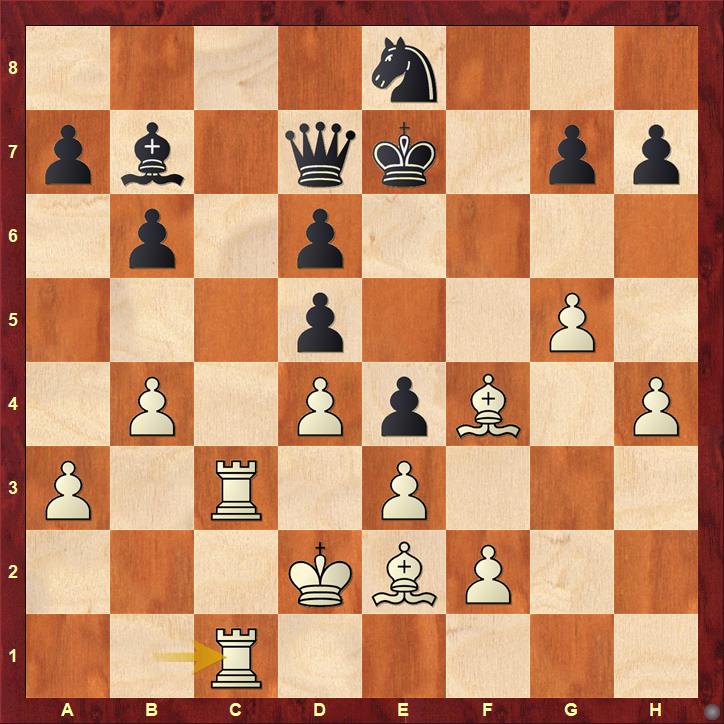
The moves and the position above does not need any explanation! White pieces with the help of his pawns, robed important squares and pushed the Queen - the only active Black piece - back and restricted its movement too. Sultan Khan went on to win a famous game reducing Capablanca to mere wood pushing for the next 30 moves and surrender!
Position 3
Stern - Kushnitzky
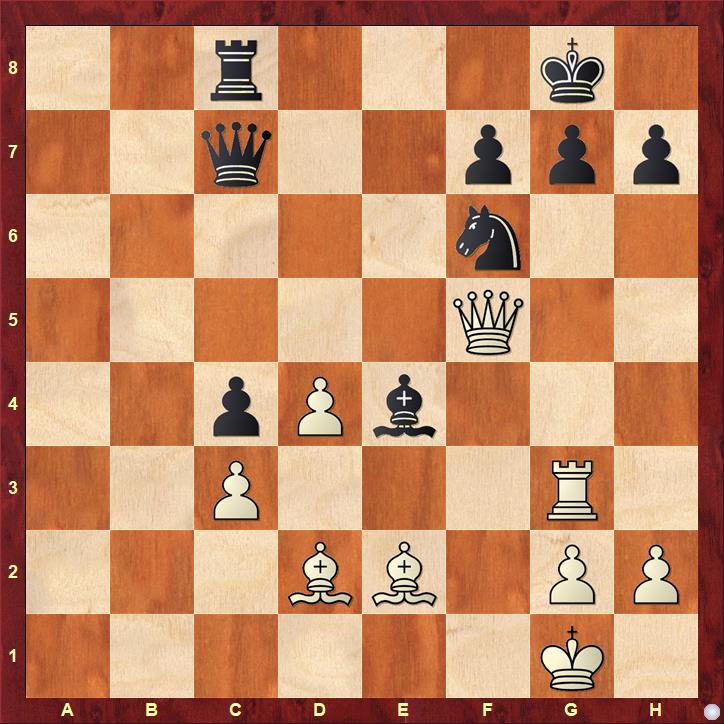
I came across this position recently and forgot the source. I tried to trace this game in the database, as I would love to see how this position came about, in terms of the topic that we are discussing. Assuming, the Black Bishop was on b7, he could have played ...Ne4! instead of the trappy ...Be4, when the position would have remained roughly in balance.
1.Rg7!!
Must have threw Black from his Chair! Obviously 1.Qf6?? meets with Qg3!
1...Kg7 2.Bh6!! Kh6 3.Qf6 Bg6 4.g4!
Now Black would have regretted his decision to have played ...Be4? The black queen and the rook on the other side of the board is staring on empty inconsequential squares, unable to come to the aid of their monarch who is being suffocated.
4...Qa5 5.h4 Rc5!
Here, apparently White took the rook on c5 and allowed a stalemate it seems! 6.dc5?? Qc5 7.Kf1 Qg1!! = Instead, White only need to have seen the board more widely and stared at squares that could geometrically connect to the hapless Black King on h6.
6.Qh8!!
Generally, such Queen moves fall outside the purview of human perception as the mind is inept at approaching a position in a simple way without indulging in complex calculations. No position is complex enough to calculate deeply and if one can manage to keep things simple and approach a position in a simple manner, then they would perhaps be able to see - or hear - such squares screaming to draw their attention! The move threatens a simple mate from f8 square!
6...Be4!
The only move to give space to Black King
7.Qf8 Kg6 8.Qc5!
And the position gets simplified into a clearly advantageous ending for White.
Position 4
Alexander Malevinsky - Semen Dvoirys, USSR 1984
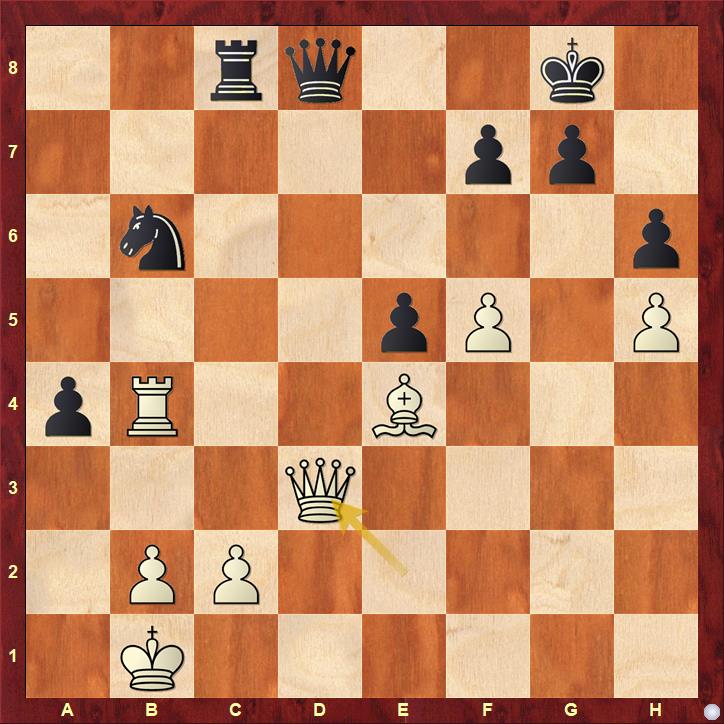
This position is derived a few moves earlier from a game position quoted by Dvoretsky. Black to play, should have realised that there is some issue with regard to his Kingside if he allowed the push f6 .......and therefore should have traded the Queens, resulting in a roughly equal position. Instead, he played....
32.......Qc7?
Should we say he was greedy!? The square "f6" would certainly have blared in his ears. But....as happens on most occasions, a player turns deaf ears to the voice of squares in such situations and is guided by his conditioned thinking and desire for something which is not appropriate. The position is already lost from being in balance a move back!
33.f6 Qc5 34.Bh7??
Highly insensitive to the voice of squares, White subsequently managed even to lose the game! There are too many blips in the position..... "g3" (leading to "g7") its allied squares ...."f6" and even "h5" must have been pleading White to put his Queen on g3! Let us see what happens after that.
34.Qg3! g5 35.hg6! Qb4 36.Bf5!!
It is this square which is most pivotal! Being a Rook down, White casually puts his Bishop on the f5 square to cut off Black King escaping via "e6". Now there is no defence for the threatened 37.gf7 followed by mate! A chief reason why such things are frequently missed even in master praxis is, that one tends to overvalue a certain aspect, say material or a certain principle and fail to shed their mind and look at the position unconditionally. Every position is a new position - even the one that results from considering a move in a variation that is being worked out in the mind. Therefore, one cannot apply a particular rule which applied a move earlier and consider the position from an earlier perspective. Perspectives keeps changing, and so does the rules governing a particular position at a particular time.
Position 5
One man who perhaps had the greatest letgo - in Chess and in life - was Mikhail Tal! He never seem to have bothered about anything - even his kidneys! And probably because of that, his eyes and ears were wide open and was able to hear the squares sing and entice the pieces! He lived Chess!
Tal - Hecht, Varna Olympiad 1962
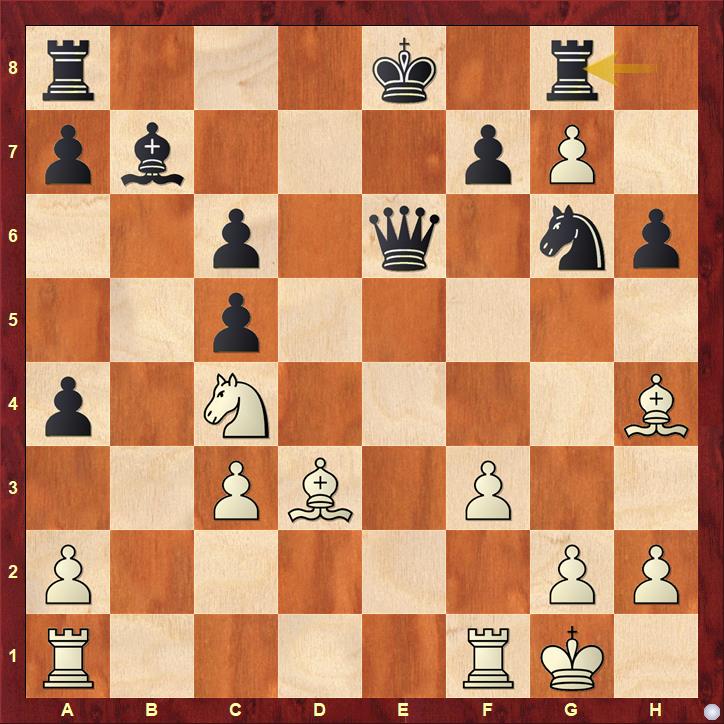
Just a move back, Tal parted with his Queen in response to the call of a cluster of squares on the opponent's side of the board! The diagonal, h4-d8, two central files leading towards the stranded Black King, the pawn on g7 guarding the f8 square and even the empty squares on the diagonal, h3-c8; a5-d8......Tal would give up anything for this bounty....except his king!
21.Bf5!!
Probably, Tal did not consider this game so high - which is evident from a perfunctory remark about this position and the continuation in his great book "The Life and games of Mikhail Tal", nevertheless it is a masterpiece. White already has only a Bishop for the sacrificed Queen, and now with the text move, puts all his minor pieces for grab!
21...Nh4!?
The game ended prosaically, after Black decided to part with his Queen and enter an ending which was of course disadvantageous from him due to his poor pawn structure. Tal won the game. But what would have happened with two other captures?
a) 21...Qc4 22.Rfe1 Qe6 23.Re6! Of course! There are many positions during a game of Chess, especially when a side is attacking, where the Bishop is stronger than the Rook. 23.....fe6 24.Bg6 Kd7 25.Rd1 Kc7 (.....Kc8 26.Bf6 followed by Bf7 wins) 26.Bg3 Kb6 27.Rb1 Ka6 28.Bd3 Ka5 29.Bc7 Mate!
b) 21......Qf5 22.Nd6 Kd7 23.Nf5 Nh4 24.Nh4 Rg7 25.Nf5 Rg6 26.Rfe1 with a clear advantage.
Space on the chessboard is defined...
- primarily by the pawns, which get off from the starting position and with every move forward, releases space below them for the pieces to move around!
- and by the our own pieces which occupy a particular post and control squares around them, radiating in all directions.
One should be careful in posting their pieces; as at times our own piece can deny space for other important pieces to perform their role. During the middlegame, it is relatively easy to perceive space and their importance as the pieces and pawns on board occupy a certain number of squares and therefore one has to only look at empty squares around them and look at ways of controlling them or occupying them.
As the pawns and pieces leave the board, the situation becomes more complex due to availability of vast space and therefore (as in life), mind experiences difficulty in comprehending the vast spaces available and how to utilise it to manoeuvre pieces. Of all the three phases, endgame is the most important and the most difficult phase to understand and play. A misstep here is almost certain to prove fatal.
In conclusion, I would sign off by quoting Gerald Abrahams:
"Always the Chess player is playing against himself. The nature of the effort is most easily recognised whenever the mind fails to grasp the whole completely. Then we have error - the grasp of the insufficient - and because of the wealth of possibilities in the matrix of the Chessboard, a degree of error is almost always manifesting itself, even in the play of the greatest masters."
About the author

Govindaseshan Srikanth is a native of Chennai, with Tamil as his mother tongue and English as his favourite language of expression. He works with strong grandmasters like Sundararajan Kidambi, Vishnu Prasanna and helps them uncover their full chess potential. A keen reader of varied subjects such as philosophy, science, literature, neurology and Hindu spiritualism, Srikanth – Sri to his friends – is a connoisseur of Karnataka Samgita or Indian Carnatic music, one of the richest and most ancient classic music forms in the world. He writes his own chess blog and the above article has been taken from there with his kind permission.





